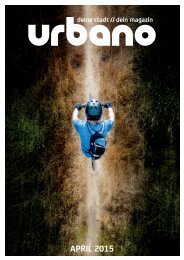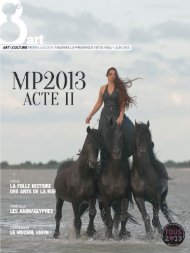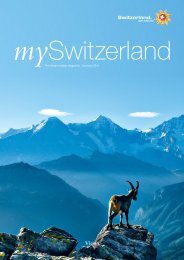Life Nature Magazine
themed ‘Dusk until Dawn’. These times are to me, some of the most exciting to experience wildlife. When I can make it out of bed in time for dawn, the chorus of birds chattering and singing above me makes the wrestle with my tiredness all worth it. As sun sets, some of the most secretive animals come out of their day time hiding places. Foxes and badgers can be seen by the lucky, and bats’ sonar can be heard with a handy bat detector. The time between dusk and dawn is fascinating too. Whilst most of us are tucked up in bed asleep, many animals are exploiting this quieter period, with multitudes of adaptations allowing them to use the darkness to their advantage. From this issue, many of the original team, including myself, are ‘phasing out’. We’re looking for new team members – see the careers section for more information on how to get involved. Whilst some of us will still be involved in the next issue, we’ll be taking less on, so we’d like to thank
themed ‘Dusk until Dawn’.
These times are to me, some of
the most exciting to experience
wildlife. When I can make it
out of bed in time for dawn,
the chorus of birds chattering
and singing above me makes
the wrestle with my tiredness
all worth it. As sun sets, some of
the most secretive animals come
out of their day time hiding
places. Foxes and badgers can
be seen by the lucky, and bats’
sonar can be heard with a handy
bat detector. The time between
dusk and dawn is fascinating
too. Whilst most of us are
tucked up in bed asleep, many
animals are exploiting this
quieter period, with multitudes
of adaptations allowing them
to use the darkness to their
advantage. From this issue,
many of the original team,
including myself, are ‘phasing
out’. We’re looking for new
team members – see the careers
section for more information
on how to get involved. Whilst
some of us will still be involved
in the next issue, we’ll be taking
less on, so we’d like to thank
You also want an ePaper? Increase the reach of your titles
YUMPU automatically turns print PDFs into web optimized ePapers that Google loves.
OPINION FROM DUSK UNTIL DAWN AUTUMN ISSUE<br />
The fading night<br />
Some years ago, while hitchhiking around the sparsely populated landscape of Namibia, I was camping in a remote location in<br />
the north of the country. There was no moon that night, and leaving my tent to go to the toilet I was initially overwhelmed by the<br />
incredible display of stars arching overhead, but also by a deep fear. It was so dark, with barely any discernable background glow on<br />
the sky, that the only way to see where the horizon began was by the absence of stars. This was the deepest view of creation I’d ever<br />
had, and yet it felt more claustrophobic than ever, as though the universe was on the verge of collapsing on itself. It was a profound<br />
reminder of how adapted I am to the day, and how successfully we have banished the darkness of night from our experience in the<br />
developed world.<br />
Our remote ancestors in the Mesozoic<br />
were well adapted to nocturnal life,<br />
as many mammals and other animals<br />
are today. The daily cycle of light and dark<br />
are essential in regulating the circadian 24-<br />
hour rhythms of most animals. Humans have<br />
<br />
millennia, but over the past century there has<br />
been an explosion of night illumination with<br />
the advent of electric lighting.<br />
<br />
the most overlooked factor in the complex<br />
web of the causes of biodiversity decline.<br />
<br />
to a reduction in visibility to predators. In a<br />
natural environment these moonless nights<br />
will be exploitable with each lunar cycle,<br />
<br />
opportunities are lost. It’s apparent that<br />
<br />
species in the shadows.<br />
A brief look at a satellite image of the world<br />
at night shows how seriously our densely<br />
<br />
has seen serious declines in numerous animal<br />
populations over the last few decades. Moths<br />
<br />
<br />
<br />
last decade, and we are just beginning to<br />
understand the extent to which the problem<br />
<br />
factors, particularly habitat destruction,<br />
<br />
in most population declines, but this is<br />
something that would be so easy to address.<br />
Aside from the obvious issue of wasted<br />
energy, do we really need streetlights to be on<br />
all night, especially on weeknights in rural<br />
villages? It’s comforting for us, and it has<br />
been argued that accidents and crime rates<br />
are lower in areas that are brightly lit, but<br />
Image: NASA, 2013.<br />
of many animals, and there is evidence that<br />
they disrupt the rhythms of birds, insects,<br />
reptiles and numerous other nocturnal<br />
animals. One of the best-studied examples is<br />
that of turtle hatchlings on tropical beaches,<br />
<br />
horizon inland. Under normal circumstances,<br />
hatchlings instinctively orientate away from<br />
the dark silhouette of the horizon towards<br />
the brighter, starry sky, leading them to the<br />
<br />
electric lights, the turtles often head inland,<br />
away from the sea, where they can become<br />
exhausted and disorientated, run over by<br />
<br />
the extra illumination to their advantage.<br />
Light pollution has been linked to population<br />
declines in snakes, disruptions of migrating<br />
birds and bats, amphibians, and invertebrates.<br />
Research suggests that invertebrate activity<br />
and small mammal distribution is increased<br />
on darker, moonless nights, probably due<br />
lights being brighter than stars even at large<br />
distances, the insects become disorientated<br />
and unable to navigate in the darker areas<br />
<br />
night of moths around streetlamps saps the<br />
animals’ energy, and creates an aggregation<br />
of prey for nocturnal insectivorous predators<br />
such as bats, which in turn are more<br />
<br />
accidents. Moths escaping predation will often<br />
land nearby, unable to navigate in the dark<br />
surroundings, leading to a loss of opportunity<br />
for feeding. This process has been referred<br />
<br />
insects are drawn out of suitable habitats<br />
for miles around the light source, leading<br />
to depleted populations in the surrounding<br />
countryside.<br />
The reduction in moth populations may<br />
also be a major factor in the current serious<br />
<br />
are heavily dependent on moths as prey.<br />
we need to spend more energy and money<br />
understanding which lighting types have the<br />
least ecological damage. Thankfully some<br />
local authorities are rolling out testing periods<br />
reducing the amount or type of lighting used,<br />
but this is largely focused on money saving<br />
rather than ecosystem regenerating.<br />
<br />
quietest periods each night would give<br />
wildlife a chance to disperse and resume<br />
it’s normal rhythms of activity, and we<br />
<br />
consumption, enjoying richer biodiversity,<br />
and of course, re-acquainting ourselves with<br />
the darkness which is as much a part of our<br />
circadian rhythm as any other species.<br />
Written by Feargus Cooney,<br />
third year Conservation Biology<br />
and Ecology BSc with the<br />
University of Exeter, Cornwall<br />
Campus.University of Exeter,<br />
24

















